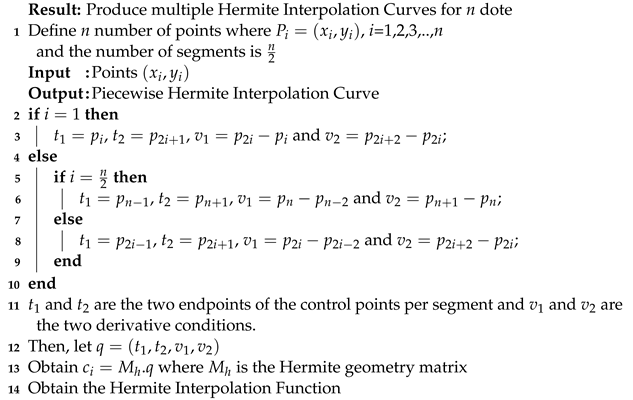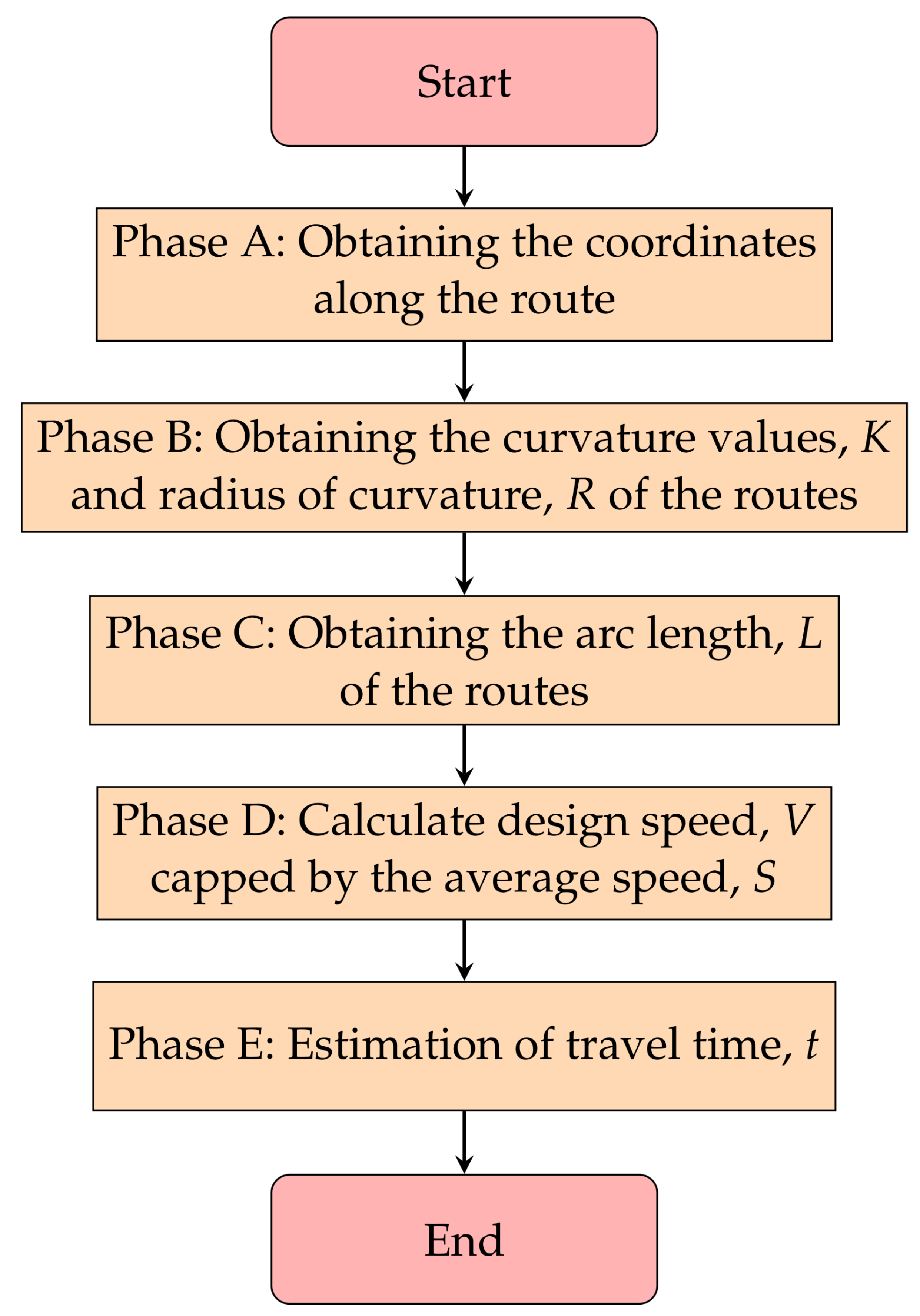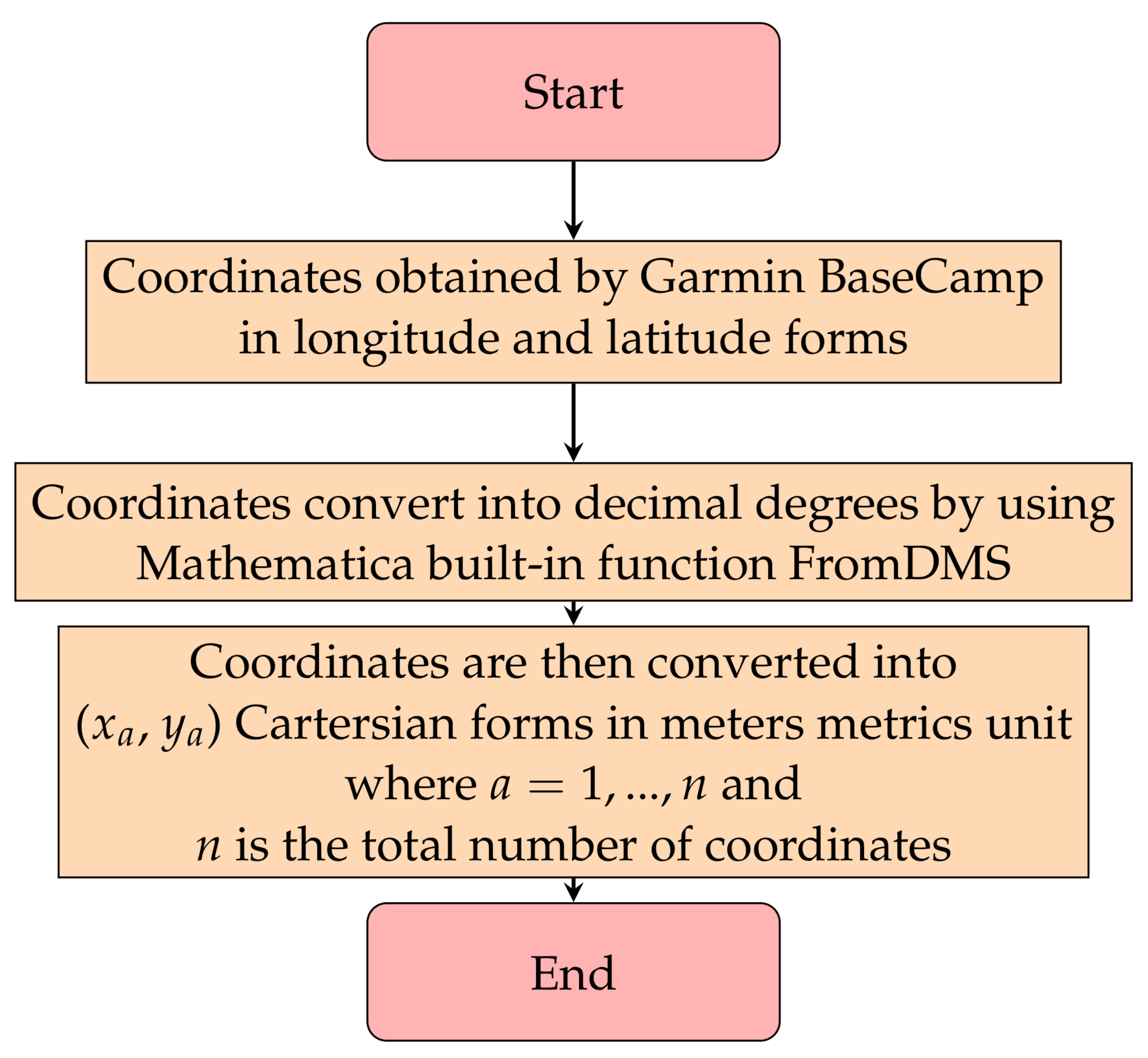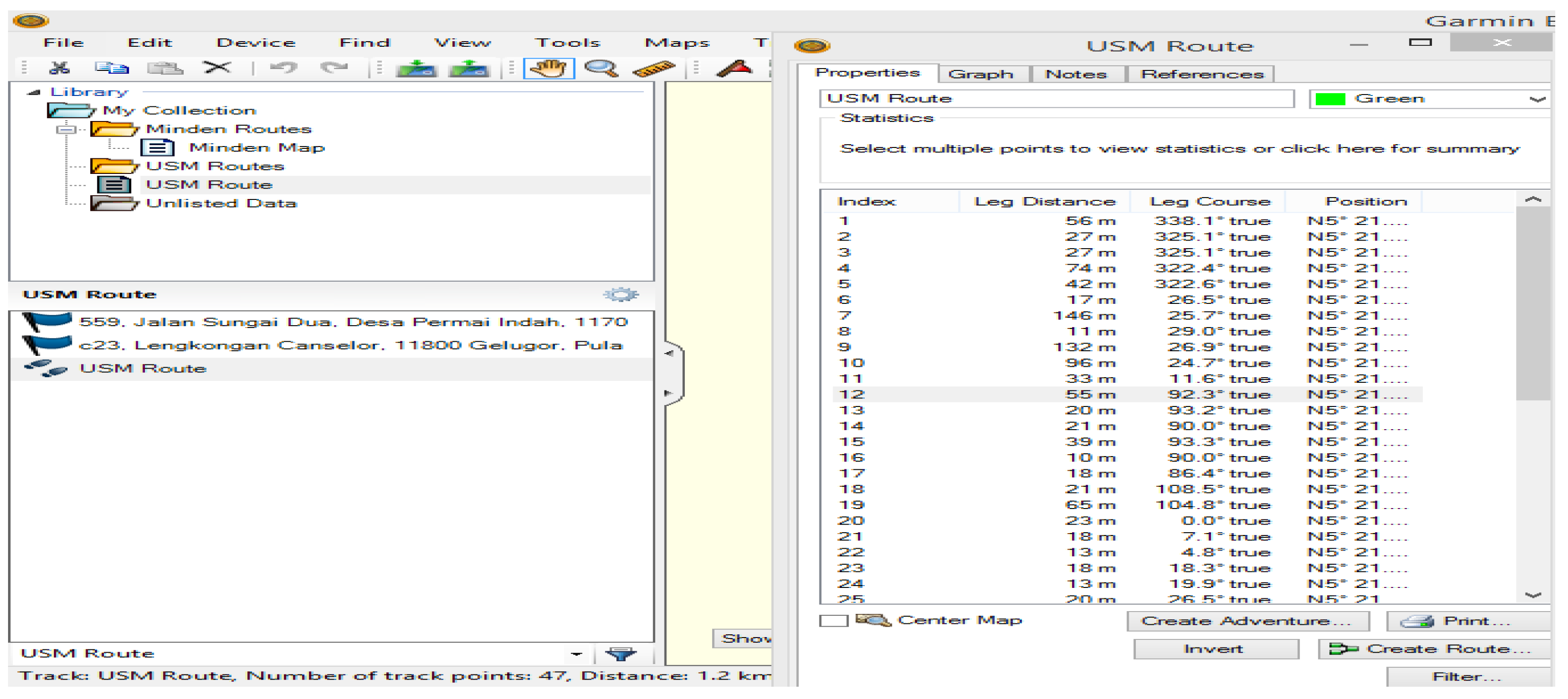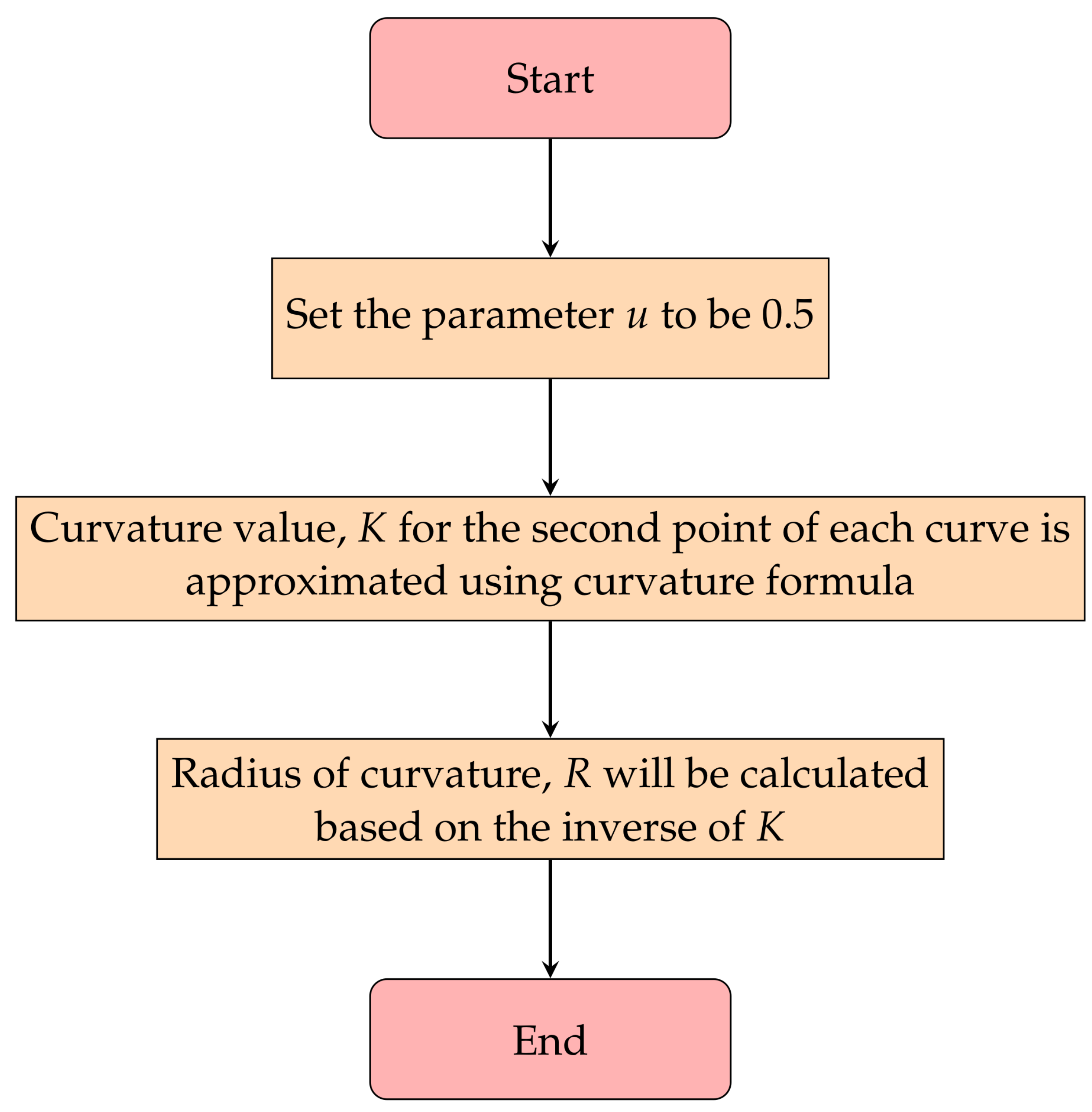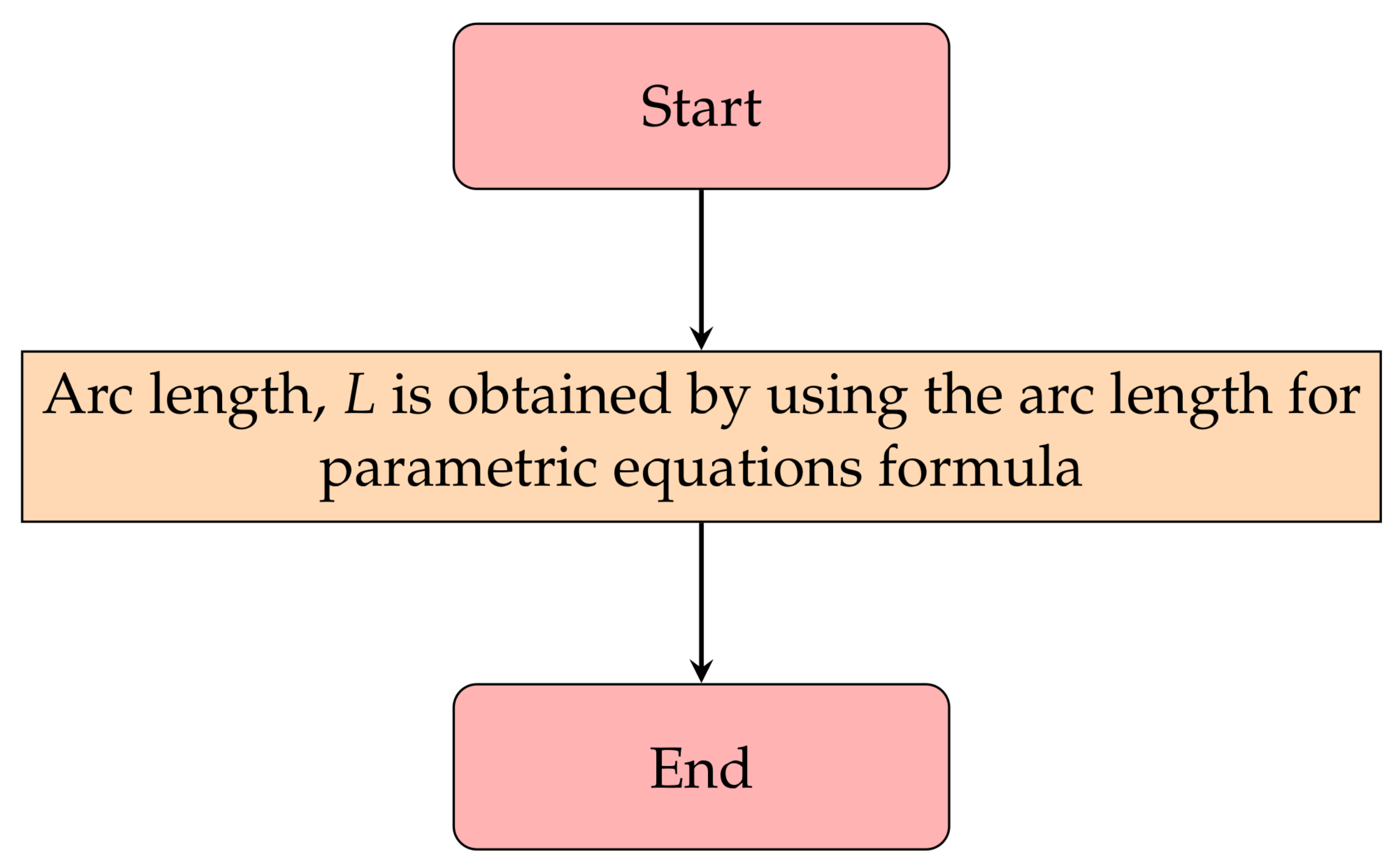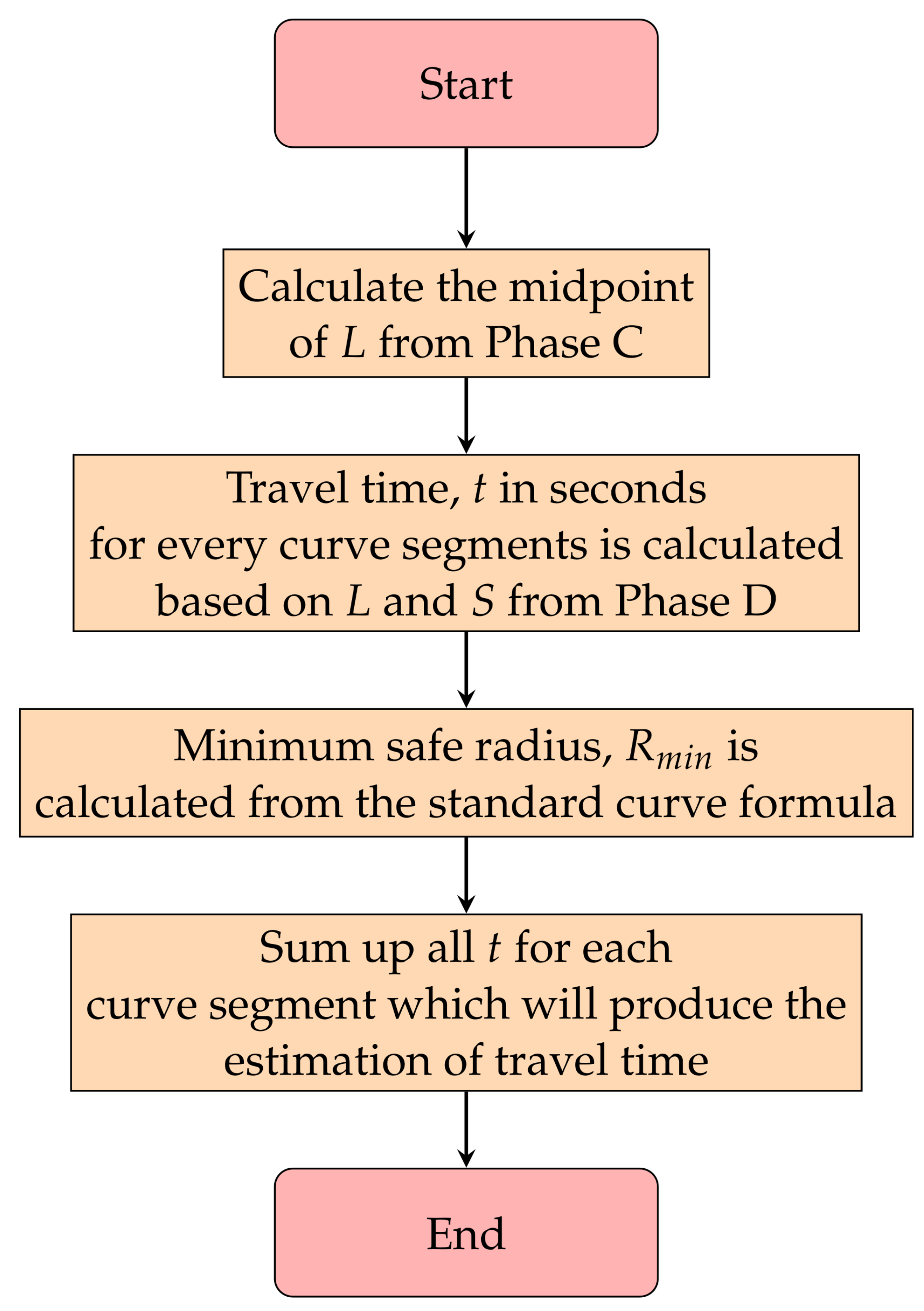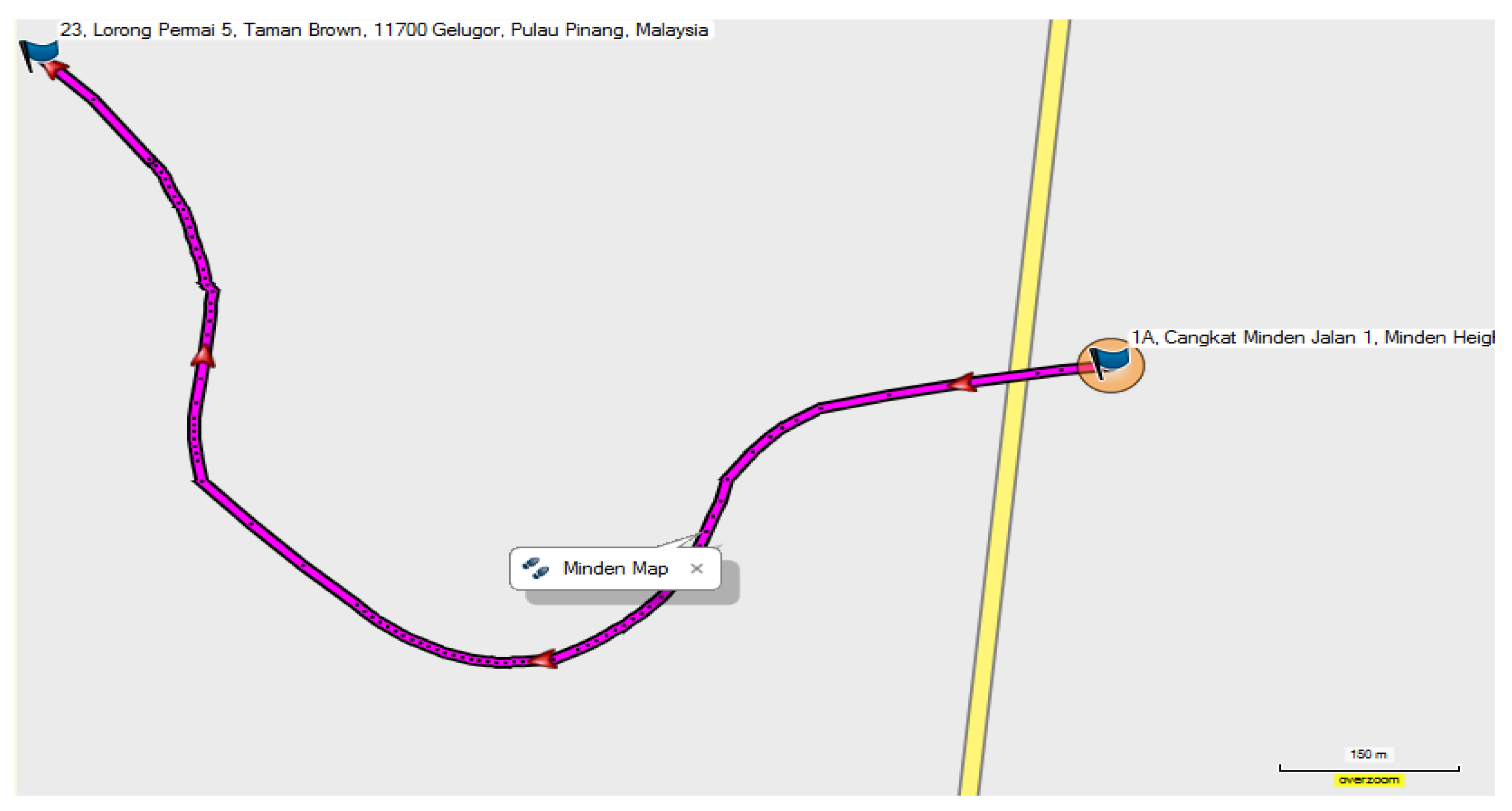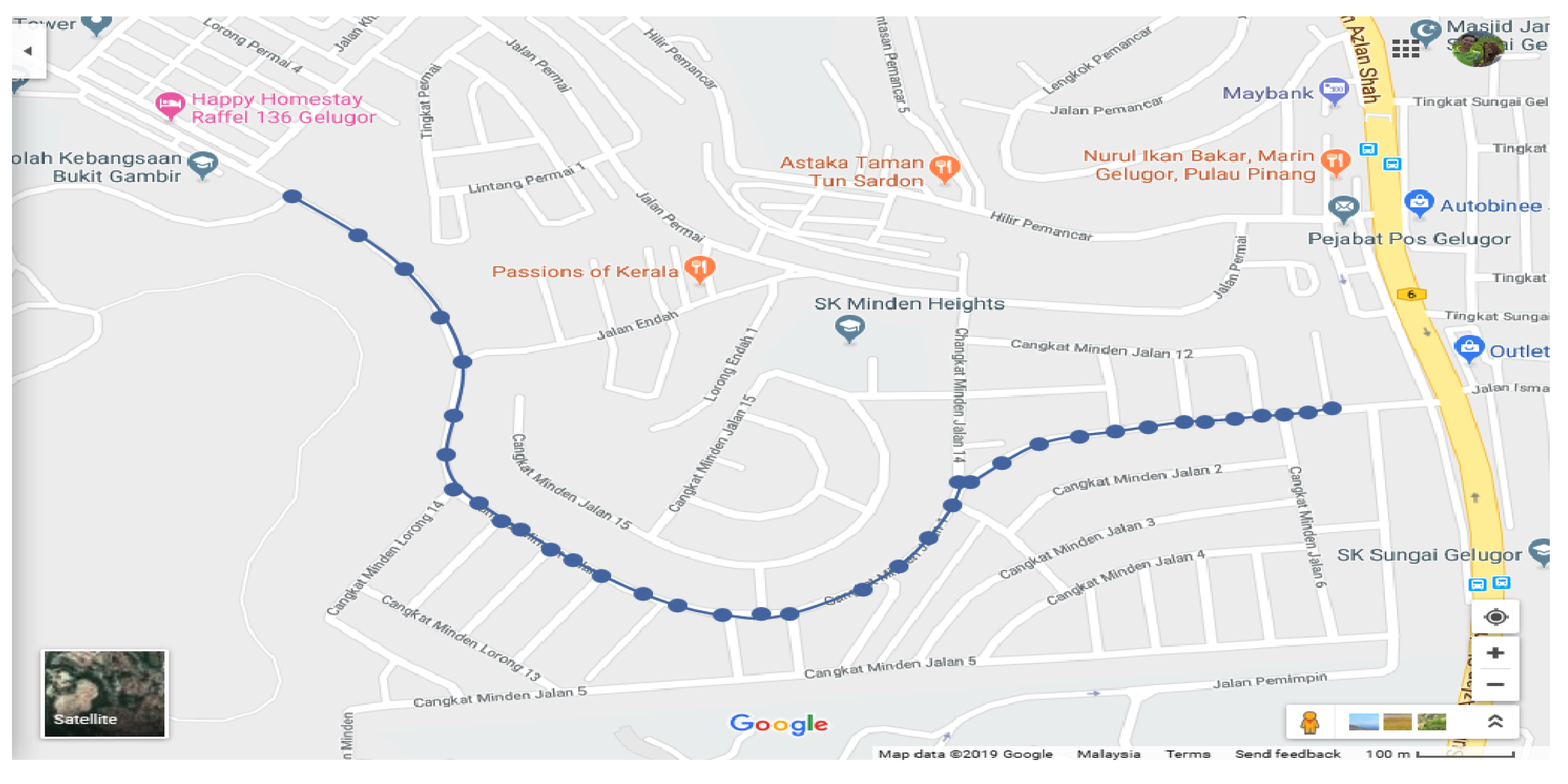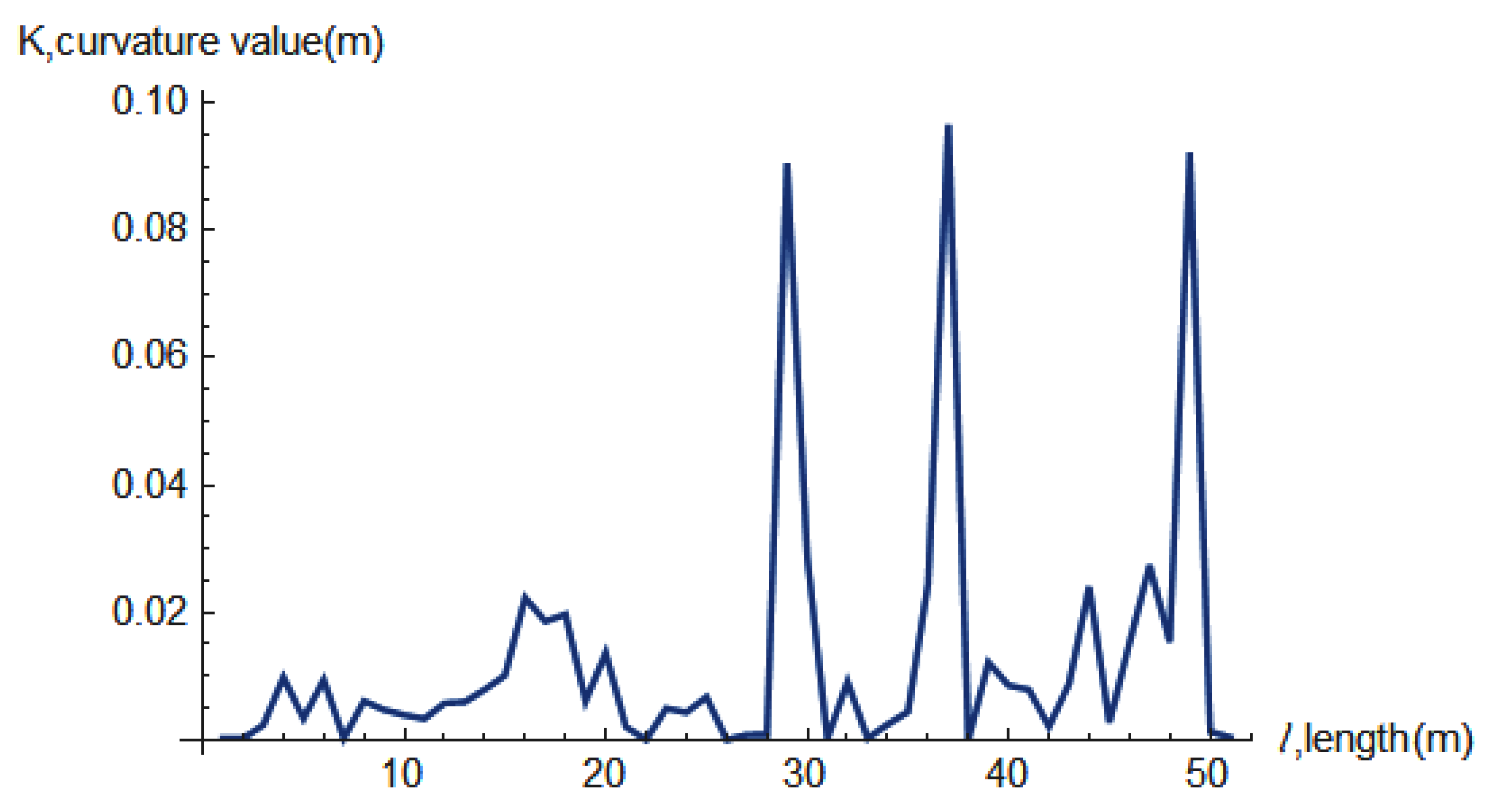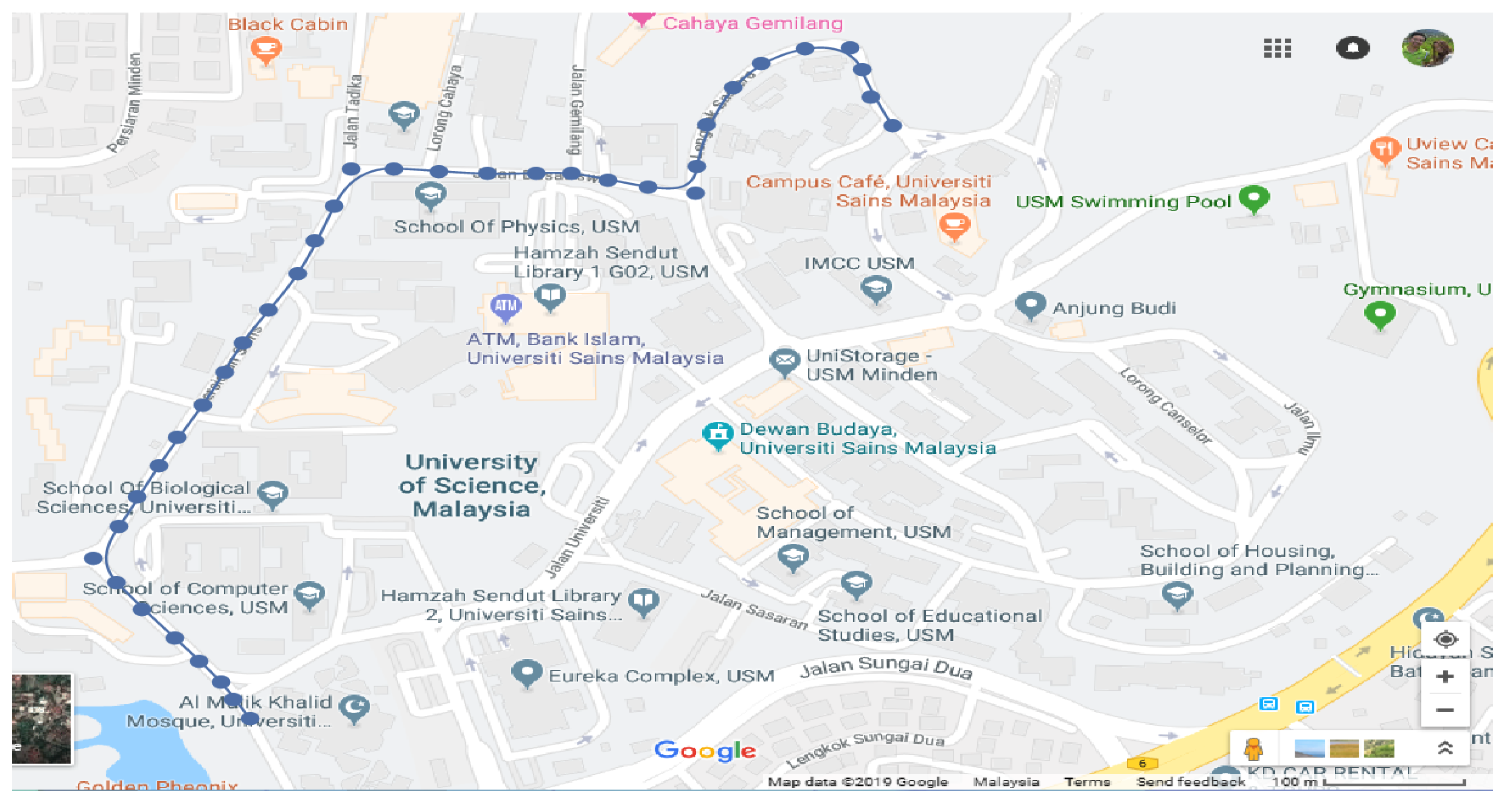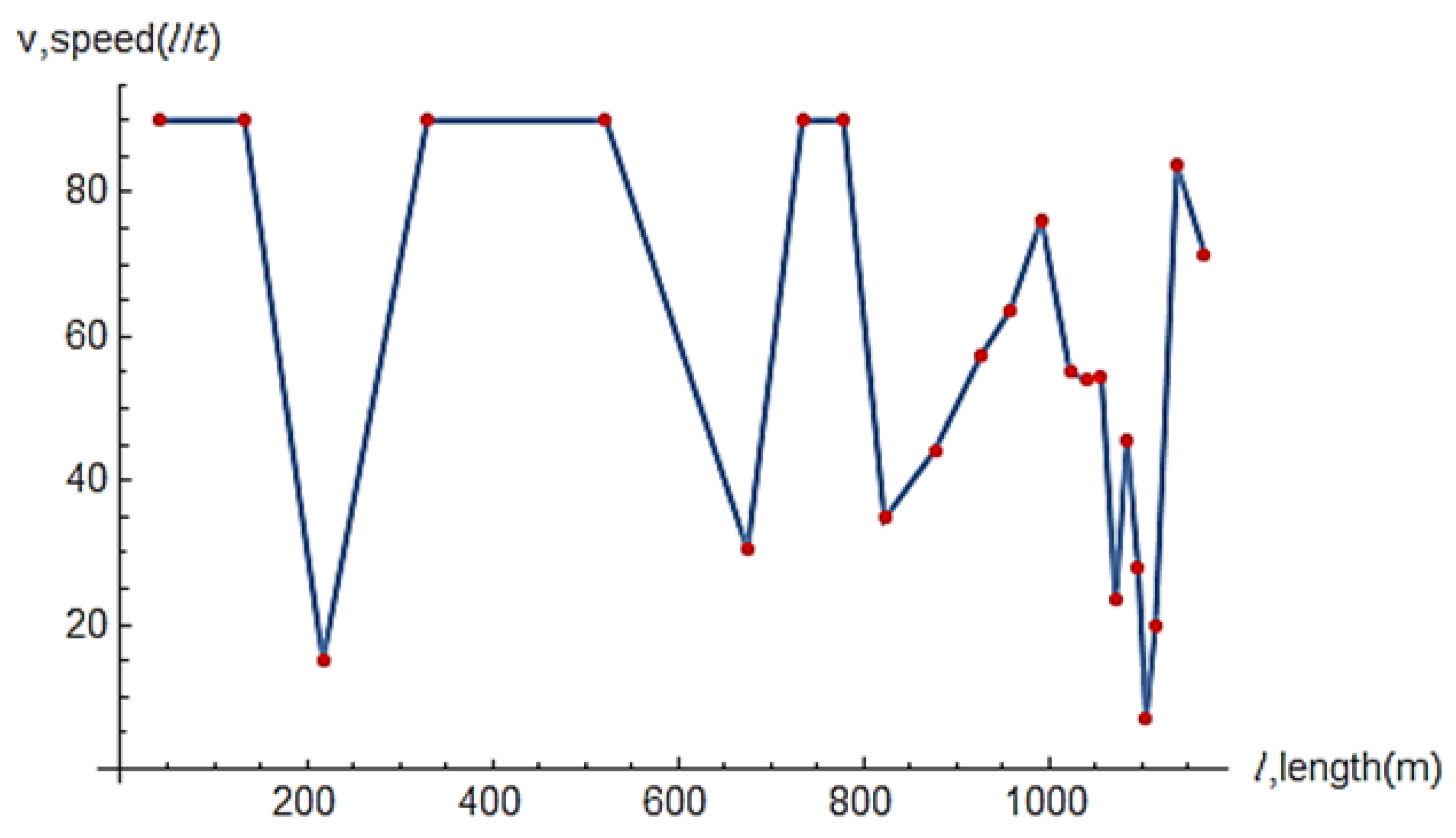2. Literature Review
Car drivers are risk-averse when choosing a route recommended by a system with a shorter average travel time than the same route’s usual travel time. On the other hand, they tend to be risk-seeking when choosing a recommended route with a longer average travel time than the expected average travel time of the same route. This trend is repeated in driving simulation research where the reference route has a broad scope of travel time while the reference range is narrower than the range of accessible paths [
7].
The curvature profile is the variability of the curve as a specific point that moves along the curve. The greater the curvature, the smaller the radius [
8]. Naturally, curvature is a quantity that is inversely proportional to the radius of the circle. The fairness of a curve, which is related to the concept of curvature profile, can be seen by plotting the curvature versus the arc length for a given curve [
8]. Thus, the curvature curve for the fair curves can be defined. This indicates that a curve is fair if its curvature plot consists of relatively few monotone pieces.
A parametric curve, such as a Hermite curve or a Bézier curve, employs a simple formula in which the curve is defined in terms of control polygons (a set of control vertices connected to form sequences or patterns). Although the curve resembles all control polygon patterns, it always interpolates the initial and final vertices [
9]. The number of control polygons is equal to the number of edges in the polynomial curve.
This description states that global control is within the formulation, which means the movement of a control vertex influences the entire curve’s shape pattern. This description indicates that global control is within the formulation. As a result, the movement of a control vertex affects the overall shape pattern of the curve. Furthermore, because it is a polynomial, the curve is infinitely different.
A continuous vector function exists in a closed curve
C in Euclidean n-space
. The continuous vector function of period
l, which is not constant in any
t-interval, is denoted as
. It is much more convenient to assume any polygon as a closed curve and ignore the differences in parameterizations. Suppose that
is a continuous vector function. A closed curve
can be simplified further to
if
produces an integer. A closed polygon
P with vertices
is said to be inscribed in a closed curve
if there is a set of parameter values
such that
, and
for all integral values of
i. If
P is a polygon with at least two coincident vertices, it can be represented as the limit of a sequence of polygons with distinct vertices. As a result, all that is left is to prove the lemma for
P with all vertices distinct [
10].
Design speed is defined as the maximum safe speed that is sustainable under ideal road conditions. This results in highway design characteristics taking precedence over a particular section of the highway. The value of design speed is ideal based on topography, neighboring land use, and highway functional classification [
11]. Thus, to achieve a safe maximum speed, the design speed should take into account vehicle safety and comfortability. According to the 1936 Barnett concept of design velocity, when the urban area is cleared, the driving community of vehicle operations will tend to be faster due to the high reasonable uniform velocity. The situation will contribute to the growing crash rate when the drivers drive along the horizontal curves of the road. The main concern at the time was that the curves were designed for non-motorized or slow-moving motorized vehicles, but car manufacturers have since been able to develop automobiles capable of reaching higher speeds [
12].
According to Leisch and Leisch [
13], design speed is a representative operating potential velocity defined by the design and correspondence of a highway’s geometric characteristics. It indicates a nearly constant near-maximum speed that a driver on the road can comfortably maintain in good weather and with little traffic. Furthermore, it also functions as an indicator for the highway’s physical condition [
13]. The design speed principle, as currently applied, does not prevent inconsistencies in highway alignment. The fundamental problem, especially in the range of design speeds below 90 km/h (55 mph), is the driver’s propensity to accelerate and decelerate continuously. The speed-profile technique can be used to resolve the speed disparity between cars and trucks, helping to meet the standards of drivers and comply with their inherent characteristics to achieve operational consistency and enhance driving comfort and safety.
Roads are constructed based on a suitable and safe design speed, which is the same for every given path in the roadway. The vehicle’s mass is assumed to be constant in the given situation, and the vehicle must be able to travel safely and comfortably at the given path of the road regardless of the bend [
14]. The process of road velocity design reflects the correlation between curvature and velocity, in which the basic principle of horizontal curve design is derived from kinematic equation applications. In the 1930s, the United States designed the roadway’s vertical and horizontal alignments with design speed as the main consideration. By taking design speed into consideration, the design criteria for a new roadway were proposed to ensure the development of an appropriate horizontal curve radii, superelevation rates, and vertical curve elements.
The design criteria were suggested to develop appropriate horizontal curve radii, superelevation rates, and vertical curve elements for new roadways [
11]. Simultaneously, the use of statistical analysis of the independent vehicle speeds on the freeway was introduced. There are areas in which the stated velocity limit centered on the 85th percentile speed above the roadway’s recommended design speed due to variations in design and activity requirements.
It is possible to predict general travel time for routes using traditional navigation systems. For instance, regardless of the route’s metric system, a travel time can be calculated by dividing the path’s distance by the speed limit. However, such calculations may contain errors due to road conditions, traffic congestion, driving habits, the accuracy of the navigation system, and other variables that navigation systems do not account for [
15]. The real-time measurement for travel time of a single route consists of a set of multiple road sections. The development of the sections is essential for the needs of traffic control, searching for driving directions, ride-sharing, and taxi dispatch [
16]. The use of loop sensors as a new technique would tell individuals the travel speed of a particular path section instead of the travel time of a full journey.
Furthermore, the use of Vehicular Ad-hoc Network (VANET) technology, optimal sensor location model, Cellular Floating Vehicle Data (CFVD), Travel-Time Variability (TTV) and Urgent-Gentle Class (UGC) traffic flow model will enable effective and efficient transportation in the city [
17,
18,
19,
20,
21]. The UGC traffic flow model estimates travel time through a ring road with viscoelastic and ramp effects. This method applies mathematical modeling in travel-time estimation without traffic data. Results show that average travel time increases when the initial ring-road density increase.
Several traveler information systems have recently been developed to provide travelers with real-time traffic information. In a typical travel information system, a road map is divided into route segments. The time required for a vehicle to travel along a particular route segment is predicted using historical and real-time sensor data. On the road, travel-time predictions are based on the relationship between the distance between two points and the time required to complete the journey [
22].
Over the last decade, there has been a motivation for the development and deployment of Intelligent Transportation Systems (ITS) in travel-time estimation due to the numerous advantages that these systems can primarily provide, using Bluetooth. These systems are designed to provide users with information regarding pre-trip or en route travel to help them choose the most efficient mode of transport and to ensure an optimal control strategy. Currently, most of the states in the United States provide travelers with information on current road conditions, such as speeds, travel time, incidents, and lane closures. Drivers can then be informed of their travel time via dynamic message signs, the Internet, and cell phones [
23]. By analyzing information from a large sample of vehicle trips within a city, it is possible to remodel the city’s traffic pattern [
24].
There may be a few factors affecting travel-time estimation based on the route traveled between two points in the network. The consistency of the range of average travel time value along the pathway is one of the factors. A study was conducted in which the movement and position of the probe vehicles within a specified interval on the road were used as the primary observation for the purpose of predicting travel time. The sampling rate is assumed to be lower due to the scale required for measuring travel time, which is shorter than the distances between consecutive records. Instantaneous speed data would not be accessible because of the communication bandwidth limitations. Within these communication bandwidth constraints, the only data available is the distance traveled and the estimated travel time [
25]. Disregarding the influence of the initial travel time will undoubtedly influence the identification of the shortest route and traffic data [
26].
